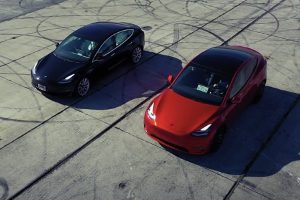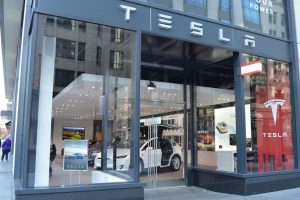- 🚗 The lawsuit against Tesla concerning phantom braking in its EVs is moving forward, but only partially.
- 👨⚖️ U.S. District Court Judge Georgia Alexakis has allowed the case to continue on grounds that Tesla allegedly concealed the issue from consumers.
- ❌ Claims regarding forced overpayment for insurance due to collision system warnings were dismissed by the judge.
- 🛑 The lawsuit stems from false collision alerts generated by Tesla’s vehicles, which plaintiffs say the company knew about since 2015.
- 📉 Tesla requested the entire lawsuit be dismissed and denied awareness of the issue during vehicle sales.
- 🔎 NHTSA has opened an investigation into 416,000 affected Model 3 and Y units, citing multiple complaints but no reported accidents.
In a rapidly changing automotive landscape, Tesla has been navigating rough waters with its ongoing legal battle concerning the critical issue of phantom braking in its electric vehicles (EVs). The lawsuit, though partially moving forward, raises essential concerns and sheds light on the challenges of implementing advanced driver assistance systems. In this blog post, we delve into the details of this case, analyze its broader implications, and discuss how such issues can influence consumer trust and regulatory approaches in the EV industry.
The Background of the Phantom Braking Issue
Phantom braking refers to the unexpected and unnecessary activation of a vehicle’s automated emergency braking system, leading the car to halt without an apparent external cause. This phenomenon could potentially cause rear-end collisions and disrupt traffic flow, thereby raising significant safety concerns. The plaintiffs in this lawsuit allege that Tesla vehicles have been erroneously generating these alerts, claiming no immediate safety threats were present to justify the braking actions.
Key Points in the Lawsuit:
- Partial Progression of the Lawsuit: The case against Tesla, spearheaded by claims of intentional concealment of the phantom braking issue, has received the green light to proceed under U.S. District Court Judge Georgia Alexakis. However, some parts of the lawsuit—particularly those involving Tesla owners allegedly overpaying insurance premiums due to system issues—were dismissed.
- Allegations of Concealment: Plaintiffs argue that Tesla has been aware of the braking issue for years, citing 2015 as a potential starting point for the automaker’s knowledge. They claim Tesla continued selling vehicles without disclosing this information to consumers, thus intentionally hiding the defect.
- NHTSA’s Involvement: The National Highway Traffic Safety Administration (NHTSA) has taken notice, opening a preliminary investigation into approximately 416,000 Model 3 and Y units. Although this investigation brought forward 354 complaints, it did not report any accidents or injuries directly linked to the phantom braking issue.
What Does This Mean for Tesla and the EV Industry?
This legal battle unveils several critical implications for Tesla and the broader automobile industry, particularly concerning safety, transparency, and consumer trust in technology-driven vehicles.
Safety Concerns and System Integrity
Tesla’s situation underscores the necessity for robust testing and validation of automated systems. Safety features designed to prevent accidents should, paradoxically, never become a source of risk themselves. Ongoing advancements in AI and machine learning—which fuel these systems—must be met with rigorous scrutiny and fail-safe mechanisms to assure drivers’ safety.
Consumer Trust and Corporate Accountability
At the heart of the lawsuit is a trust issue—one that could significantly impact consumer confidence. As trusting relationships between consumers and manufacturers are crucial, transparency about vehicle capabilities and limitations is non-negotiable. Companies must maintain open communication lines concerning existing or potential defects to preserve their reputations and consumer loyalty.
Impact on Insurance and Regulatory Measures
While claims linking increased insurance premiums to phantom braking have been dismissed, the potential relationship between advanced vehicle systems and insurance rates cannot be ignored. Automakers should closely collaborate with insurance companies to provide realistic, data-driven evaluations of vehicle safety features. Meanwhile, regulatory bodies like NHTSA are likely to beef up their monitoring operations, ensuring advanced vehicle technologies meet stringent safety standards before reaching consumers.
What Lies Ahead?
While the outcome of Tesla’s court proceedings remains uncertain, this case serves as a cautionary tale for the entire automotive sector. It emphasizes the necessity of properly addressing technological challenges and confirms the substantial responsibility automakers face as they integrate increasingly complex systems into their vehicles.
As the EV industry continues to innovate, all eyes will be on how manufacturers balance speed-to-market pressures with the essential need for safety and reliability, ensuring that high-tech ambitions don’t overshadow the fundamental promise of safe, dependable transportation.





